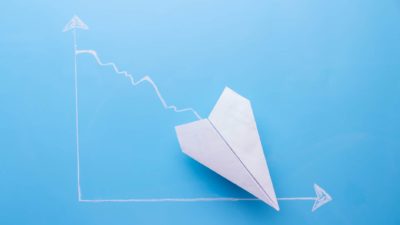The Qantas Airways Ltd (ASX: QAN) share price is bucking the wider market selloff today, flying 2.5% higher at the time of writing.
This comes after the airline released several key updates to the market this morning. Those include a projected return to profitability next financial year alongside plans to fly the world's longest direct flights commencing in 2025.
Here's what you need to know.
Qantas share price lifts on record-breaking flight plans
If you've ever flown to New York or London, you'll be well aware of the extra hours it takes to get there due to refuelling stops.
Today, the Qantas share price looks to be getting a boost following the announcement of major domestic and international fleet decisions.
On the domestic front, Qantas 'Project Winton' will see the airline work on renewing its fleet of narrow body jets as it progressively retires its Boeing 737s and 717s. The company reported it has firm orders for 20 Airbus A321XLRs and 20 A220-300s. It expects the first aircraft to be delivered in the latter months of 2023.
On the international front, with what could save international travellers many hours of stopover delays, the airline reported that its Project Sunrise had been given the green light by its board. This will see Qantas buy 12 new Airbus A350s to fly direct routes from Australia to international destinations, including London and New York.
The flights are expected to commence out of Sydney in 2025. These will be the longest direct flights offered by any airline in the world.
The Qantas share price could also be getting a lift from ESG focused investors, with the report that the new aircraft and engines will reduce emissions by 15% or more.
Commenting on Project Sunrise, Qantas CEO Alan Joyce said:
Throughout our history, the aircraft we've flown have defined the era we're in. The 707 introduced the jet age, the 747 democratised travel and the A380 brought a completely new level of comfort.
The A350 and Project Sunrise will make any city just one flight away from Australia. It's the last frontier and the final fix for the tyranny of distance. As you'd expect, the cabin is being specially designed for maximum comfort in all classes for long-haul flying.
The company said it will fund the new planes within its debt range and through earnings "while still leaving room for shareholder returns".
"The Board's decision to approve what is the largest aircraft order in Australian aviation is a clear vote of confidence in the future of the Qantas Group," Joyce added.
What other updates were reported?
Qantas also released its third-quarter (Q3) trading update this morning.
ASX investors could be bidding up the Qantas share price after it revealed that domestic travel numbers were rebounding faster than expected. Domestic numbers are now back at levels not seen since before the onset of COVID-19 saw state borders slam shut.
Both leisure and business travel demand was said to be rebounding strongly.
While demand for international travel was also reported to be robust, pandemic restrictions in some international markets continued to throw up headwinds here in the shorter term.
Financially, the airline's net debt levels were down to $4.5 billion as at 30 April, similar to pre-COVID debt figures.
Looking ahead to the second half of 2022 (2H FY22), underlying earnings before interest, taxes, depreciation and amortisation (EBITDA) are forecast to come in at $450 million to $550 million. Underlying EBITDA in the first half came in at a loss of $245 million.
Qantas said it is on track to return to profitability in the 2023 financial year. It expects capital expenditure for FY23 to come in at $2.3 billion to $2.4 billion, in line with its previous forecasts.
"After a few false starts, we're finally seeing a sustained recovery in travel demand," Joyce said. "People have confidence in domestic borders now that we've shifted to living with COVID and that's bringing us back towards pre-pandemic levels of flying."
Qantas share price snapshot
The Qantas share price has gained 16% so far in 2022, well outpacing the year-to-date loss of around 2% posted by the S&P/ASX 200 Index (ASX: XJO).








